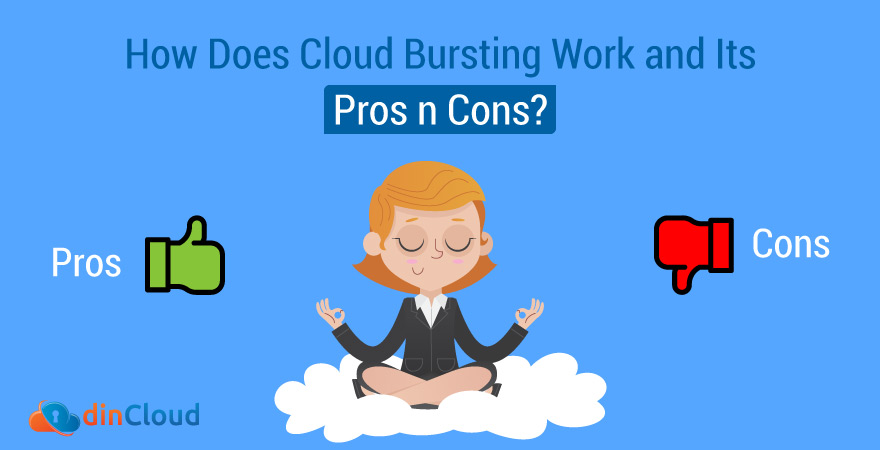The sheer thought of a cloud burst can make us feel scared. Of course, a cloud burst from the sky is scary, and such incidents are also known to cause a lot of damage, but the type of cloud burst we are talking of relates to the domain of Cloud Computing.

What is Cloud Bursting in Cloud Computing?
As the name suggests to some extent, cloud bursting gives enterprises the capability and added peace of mind to extend their on premise IT resources to the public cloud, only when needed under special circumstances.
The on-premise IT resources we are talking about could be an in-house server setup, or a dedicated private cloud to take advantage of virtualized resources. Although cloud bursting in theory is a good concept, it has its unique set of pros and cons.
In this post, we will cover the salient features of cloud bursting, along with some of its pros and cons. We will also discuss the specific scenarios where this phenomenon can deliver the desired outcomes.
Related: 10 Compelling Reasons SMBs Need Cloud Computing
How Does Cloud Bursting Work?
IT infrastructure and operations managers define certain usage thresholds for their mission critical workloads. This is particularly true for customer facing operations, which can directly impact the overall customer experience.
As soon as those defined usage thresholds are achieved, a pre-defined segment of that workload or application is immediately replicated over to the public cloud environment of a Cloud Service Provider (CSP) like dinCloud.
The result of this process is a seamless transition, which remains hidden from the end users of the process or application. As soon as this temporary spike in the demand falls below the defined threshold, the public cloud resources are immediately de-provisioned.
Benefits of Cloud Bursting
Cloud bursting helps deploying enterprises achieve cost optimization. They do so by maintaining bare minimum IT resources in house, as they know there is a sound back-up in place, in case there is a sudden spike in user demand.
Secondly, the public cloud resources an enterprise consumes with this method are just on a temporary basis. This is very useful in the case of most public cloud providers, which have a “pay as you use” pricing model for their infrastructure or solutions.
Cloud bursts also help enterprises maintain a strong Business Continuity (BC) posture, as there is no risk of a mission critical service going down completely, or users experiencing a deteriorated experience in the event of a sudden spike in demand.
Related: Cloud Computing Business Applications and Implementations
Downsides of Cloud Bursting
With critical process or application data moving to and fro between enterprise resources and the cloud provider, there could be potential security risks. Implementing the same level of data security, privacy and governance can be challenging across both environments.
Despite the switch over of workloads to the public cloud in the event of high demand, network and bandwidth related limitations could still result in a sub-par end user experience (UX). This is mainly due to the issue of un-avoidable latency.
When to Use Cloud Bursting?
Now that we have covered how cloud bursts work, and their pros n cons, lets discuss the specific scenarios where this could be a suitable choice. Cloud bursts are more feasible in the case of non-sensitive workloads, where regulatory compliance is not involved.
To extract the maximum benefits from cloud bursting, it is important for deploying enterprises to adopt automated mechanisms, as soon as the critical usage thresholds for any mission critical processes or applications are achieved.
Although it is also possible to do the same manually, but this would turn out to be a very human-dependent process, and may not deliver the desired outcomes. The same holds true when de-provisioning cloud resources, as soon as usage levels return to normalcy.
Related: The Pros and Cons of Cloud Computing for Businesses
Conclusion
Under the right circumstances, and with the help of automation, cloud bursting can be a fruitful proposition. However, deploying enterprises will have to be very careful regarding their data security and regulatory compliance posture when doing so.
Contact dinCloud for public cloud solutions that are reliable, secure and robust. You can also avail our 14 Days Free Trial!


